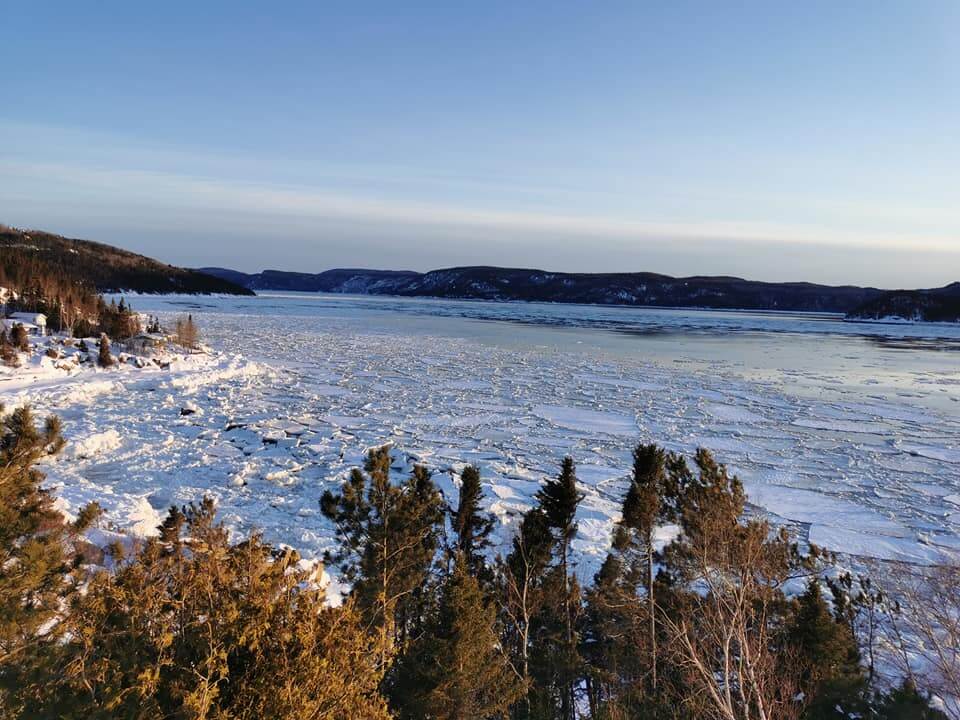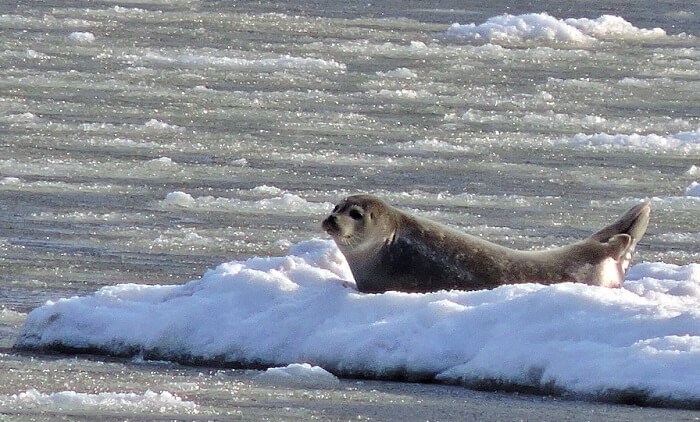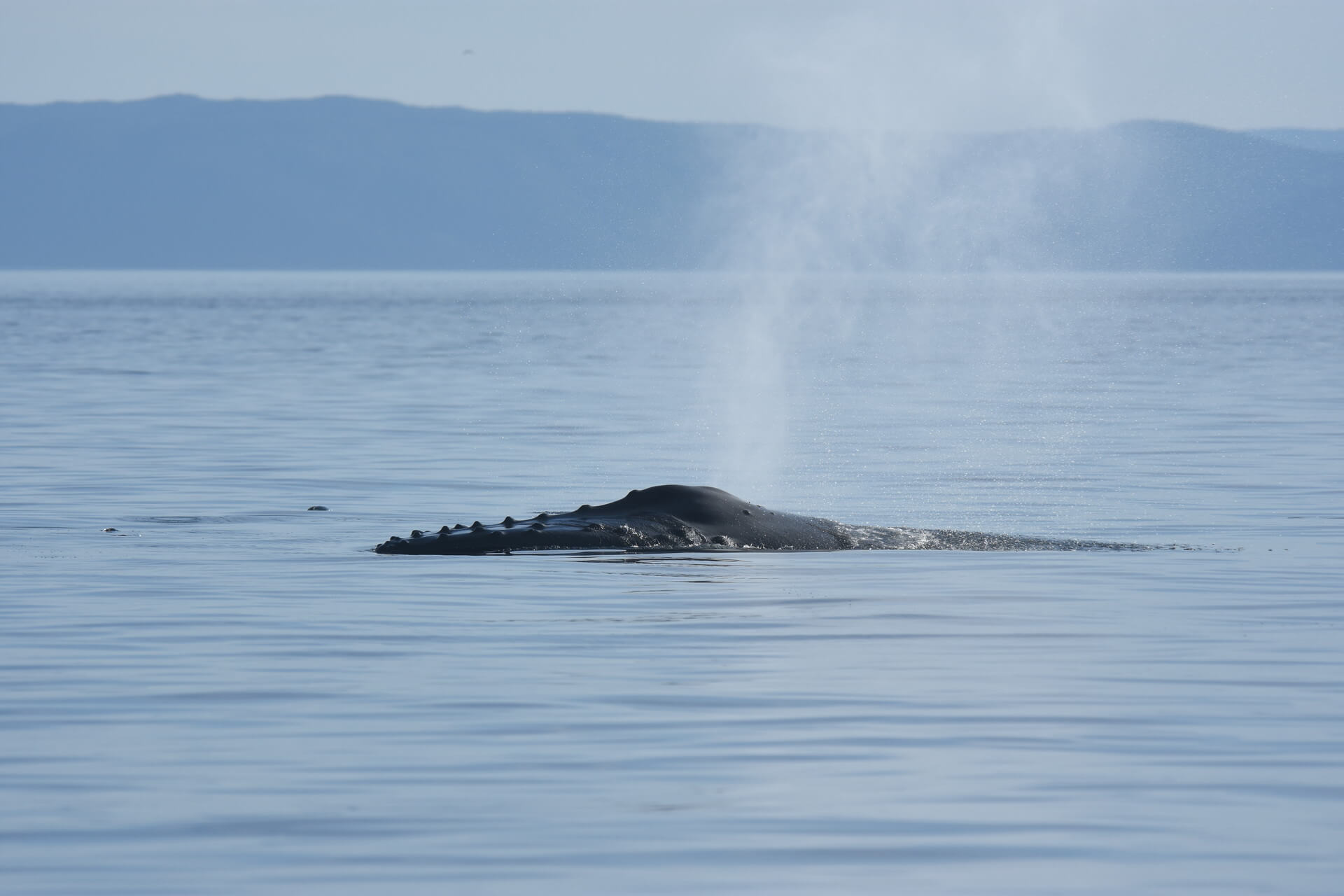After a long winter, residents are beginning to see patches of open water in the St. Lawrence’s coat of ice while enjoying the first faint aromas of spring. Be that as it may, this week has been rather calm on the River for marine mammals! Out in the Gaspé, one observer reported the daily presence of a few harbour seals in Gaspé Bay. Near Longue-Pointe-de-Mingan, mariner Jacques Gélineau observed a small group of harp seals not far from the shoreline.
A resident of Baie-Sainte-Catherine had the opportunity to admire a harbour seal basking in the sun on a large chunk of ice. It was in what we like to call the ‘banana’ position, a posture frequently adopted by seals at rest. By lying this way, with their head and hind flippers raised, seals keep their extremities out of the water and retain their body heat more effectively. In Les Escoumins, the captain of one boat saw a seal poking its head out of the water on Wednesday.
In Tadoussac, it’s not so much the wildlife that is turning heads, but rather the presence of large blocks of ice floating down the Saguenay. “When you see this, it’s a sure sign that spring is right around the corner! explains Patrice Corbeil, director of the Marine Mammal Interpretation Centre. Indeed, early in the week, icebreaking operations began in the Fjord near La Baie, forcing fishermen to remove their ice shanties. The pack ice is now sufficiently thin and brittle to create a passage for ships.
When will we start seeing whales?
These first signs of spring lead many people to ask us the big question: when will the whales return to the St. Lawrence?
The first cetaceans to be seen in the Estuary are usually belugas, which generally arrive in mid- or late March. A small group was already seen near Les Escoumins two weeks ago! Minke whales are next on the list, arriving with a bang as early as the end of March. Humpbacks usually follow shortly thereafter, followed two weeks later by fin whales. Both species are first seen in the Gulf and off the Gaspé Peninsula before reaching the Estuary. Blue whales, meanwhile, will probably not return to Quebec before the month of April.
As for harbour porpoises, we will have to wait until June to see them again. The same holds true for white-beaked dolphins and Atlantic white-sided dolphins, which will not make their first appearance before July. We can hardly wait to see them again!
For those who wish to plan their visit and whale-watching outings, we invite you to check out our tips on when and where to observe cetaceans.
Have you seen a seal or a whale?
Share your observations and photos by writing to us at [email protected] or on our Facebook page.







